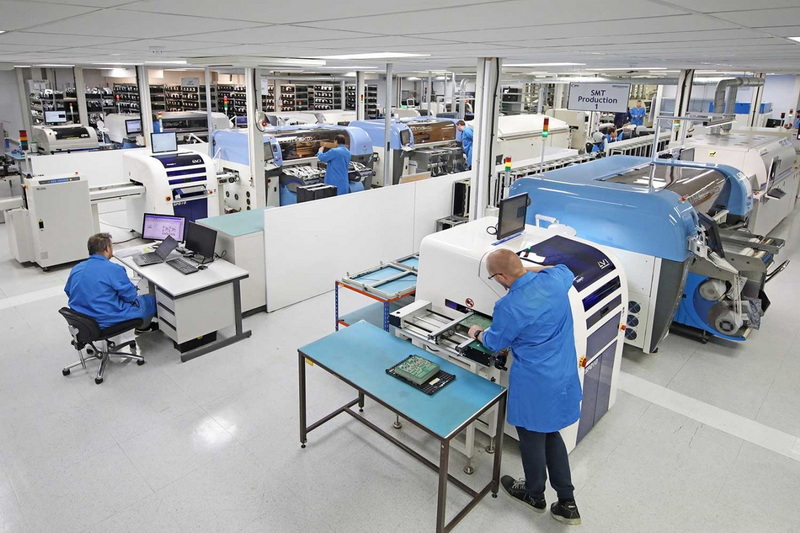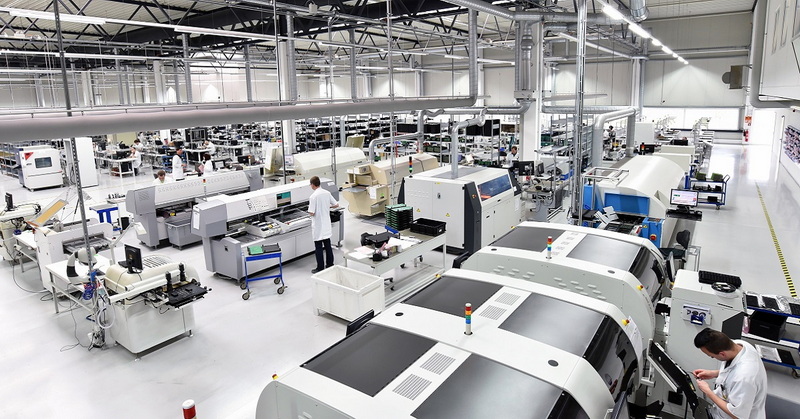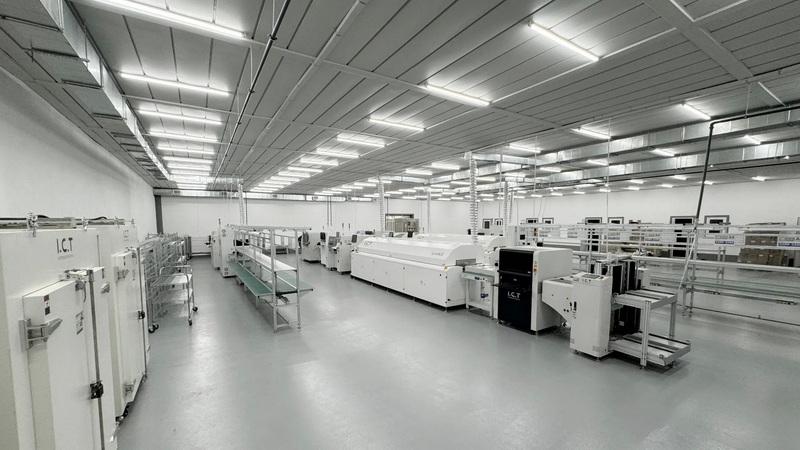Content Menu
● Understanding SMT Stencils and Their Role in PCB Assembly
>> Types of SMT Stencils
● Why Proper Maintenance of SMT Stencils is Crucial
● Best Practices for Maintaining SMT Stencils
>> 1. Regular Cleaning Frequency
>> 2. Cleaning Methods
>>> Manual Cleaning
>>> Pneumatic Spray Cleaning
>>> Ultrasonic Cleaning
>> 3. Step-by-Step Manual Cleaning Procedure
● Proper Storage and Handling of SMT Stencils
● Environmental Considerations
● Effect of Proper Maintenance on SMT Stencil and PCB Assembly Quality
● Common Issues and Troubleshooting in SMT Stencil Maintenance
● Advanced Cleaning Technologies and Innovations
● Case Studies: Impact of Proper SMT Stencil Maintenance
>> Case Study 1: Electronics Manufacturer Reduces Defects by 30%
>> Case Study 2: Cost Savings Through Extended Stencil Life
● Tips for Selecting the Right SMT Stencil for Your PCB Project
● Conclusion
● FAQ
>> 1. What are the primary reasons for cleaning SMT stencils?
>> 2. How often should SMT stencils be cleaned?
>> 3. What are the best methods for cleaning small apertures in SMT stencils?
>> 4. What are the advantages of automatic stencil cleaning systems?
>> 5. How should SMT stencils be stored and maintained when not in use?
Surface Mount Technology (SMT) stencils are essential tools in the PCB (Printed Circuit Board) assembly process. They ensure precise and consistent application of solder paste onto PCB pads, which is critical for the accurate placement and soldering of surface mount devices (SMDs). Proper maintenance and cleaning of SMT stencils directly influence print quality, assembly yield, and the lifespan of the stencils themselves. This comprehensive article covers how to properly maintain your SMT stencils for long-lasting use, focusing on best practices, cleaning methods, storage, and handling, with emphasis on the keywords *SMT stencil* and *PCB* throughout.

Understanding SMT Stencils and Their Role in PCB Assembly
An SMT stencil is a thin sheet, usually made of stainless steel or nickel, with precision-cut apertures that correspond to the solder paste patterns required on the PCB. During SMT assembly, solder paste is applied through these apertures onto the PCB pads, preparing the board for component placement and subsequent soldering. The stencil's thickness and aperture geometry determine the volume and shape of the solder paste deposits, which directly affect solder joint quality and reliability.
Types of SMT Stencils
- Laser-cut stencils: Most common and cost-effective, with smooth aperture walls for good paste release.
- Electroformed stencils: More expensive, with the smoothest aperture walls and longest lead times.
- Chem-etched stencils: Less common today, with rougher aperture walls and less eco-friendly manufacturing.
Why Proper Maintenance of SMT Stencils is Crucial
Maintaining SMT stencils is vital for several reasons:
- Prevents Print Defects: Residual solder paste in apertures can cause insufficient or uneven solder paste deposition, leading to poor solder joints and missing connections.
- Maintains Print Quality: Dust, flux, and dried paste residues reduce print definition and solder paste release, affecting assembly quality.
- Reduces Solder Balls and Beads: Paste residues can cause solder balls and mid-chip solder beads, which degrade assembly yield.
- Extends Stencil Lifespan: Proper cleaning and handling prevent corrosion, wear, and damage, prolonging stencil usability.
Best Practices for Maintaining SMT Stencils
1. Regular Cleaning Frequency
The frequency of cleaning depends on PCB production volume and solder paste characteristics:
| PCB Volume | Cleaning Frequency |
|-----------------------|-------------------------------|
| 1-5 boards per day | After each print |
| 5-10 boards per day | After every 2-3 prints |
| More than 10 boards/day| After every 5-10 prints |
Frequent cleaning is especially important during initial runs to optimize the process and prevent defects.
2. Cleaning Methods
There are three main methods to clean SMT stencils:
Manual Cleaning
- Suitable for low-volume or prototype PCB assembly.
- Steps include visual inspection, loosening dried paste with adhesive tape, cleaning apertures with soft brushes and solvents, wiping top and bottom surfaces, drying, and final inspection.
- Use lint-free gloves to avoid fingerprints.
- Use solvents compatible with solder paste flux chemistry, such as isopropyl alcohol or specialized stencil cleaners.
- Avoid excessive scrubbing to prevent damage.
Pneumatic Spray Cleaning
- Uses compressed air and cleaning agents in an automated or semi-automated system.
- Efficient for medium to high volume production.
- Economizes manpower and provides consistent cleaning quality.
- May have limitations with oversized or very thick stencils.
Ultrasonic Cleaning
- Uses high-frequency sound waves to agitate cleaning solutions, effectively removing residues from intricate apertures.
- Highly effective but requires specialized equipment and higher investment.
- Best for detailed stencil designs and stubborn residues.
3. Step-by-Step Manual Cleaning Procedure
1. Visual Inspection: Check for dried solder paste, debris, or damage.
2. Preparation: Wear lint-free gloves; prepare solvents, swabs, and wipes.
3. Loosen Paste: Use adhesive tape to lift large paste chunks.
4. Clean Apertures: Gently brush apertures with a soft brass brush and solvent.
5. Clean Surfaces: Wipe bottom and top sides with solvent-soaked wipes/swabs.
6. Final Wipe: Use lens cleaning tissue for residue-free finish.
7. Drying: Air dry or use clean compressed air.
8. Inspection: Confirm no residue remains, apertures are clear, and stencil integrity is intact.

Proper Storage and Handling of SMT Stencils
- Store stencils in a clean, dry environment to prevent corrosion.
- Avoid contact with other metal objects to prevent scratches and damage.
- Use protective covers or cases during transport and storage.
- Handle stencils carefully, always wearing gloves to avoid fingerprints and contamination.
- Regularly inspect stencils for wear, corrosion, or aperture deformation.
Environmental Considerations
- Control humidity and temperature in the stencil storage and cleaning areas.
- High humidity accelerates solder paste drying, making cleaning harder.
- Stable environmental conditions help maintain consistent cleaning results and stencil longevity.
Effect of Proper Maintenance on SMT Stencil and PCB Assembly Quality
- Ensures consistent solder paste volume and shape, improving solder joint reliability.
- Reduces printing defects such as insufficient paste, solder bridging, and solder balls.
- Enhances process stability and yield in PCB assembly.
- Extends stencil life, reducing replacement frequency and costs.
Common Issues and Troubleshooting in SMT Stencil Maintenance
Even with proper maintenance, some common issues may arise during stencil use. Understanding these problems and their solutions can help maintain print quality and reduce downtime.
- Clogged Apertures: Residual solder paste or flux can clog apertures, causing insufficient paste deposition. Regular cleaning and using appropriate solvents can prevent this.
- Stencil Warping: Exposure to heat or improper storage can warp stencils, affecting print accuracy. Store stencils flat and avoid high temperatures.
- Aperture Damage: Mechanical damage or corrosion can deform apertures, leading to inconsistent solder paste volume. Inspect stencils regularly and replace if damaged.
- Solder Balls and Bridging: Caused by excess paste or poor stencil release. Adjust printing parameters and ensure stencil cleanliness.
Advanced Cleaning Technologies and Innovations
Recent advancements in stencil cleaning technology have improved efficiency and effectiveness:
- Automated Inline Cleaning Systems: Integrated into production lines, these systems clean stencils between prints without manual intervention, reducing downtime.
- Eco-friendly Cleaning Solutions: New solvents and cleaning agents are designed to be less harmful to the environment while maintaining cleaning performance.
- Laser Cleaning: Emerging technology using laser pulses to remove residues without physical contact, preserving stencil integrity.
Case Studies: Impact of Proper SMT Stencil Maintenance
Case Study 1: Electronics Manufacturer Reduces Defects by 30%
A mid-sized electronics manufacturer implemented a strict stencil cleaning schedule and switched to ultrasonic cleaning. This resulted in a 30% reduction in solder joint defects and improved overall yield.
Case Study 2: Cost Savings Through Extended Stencil Life
A PCB assembly company extended stencil life by 50% through proper handling, storage, and cleaning practices, significantly reducing stencil replacement costs.
Tips for Selecting the Right SMT Stencil for Your PCB Project
- Consider Aperture Design: Choose stencils with aperture shapes optimized for your component types to ensure proper paste volume.
- Material Selection: Stainless steel is common, but nickel stencils offer longer life for high-volume production.
- Thickness Matters: Thicker stencils deposit more paste, suitable for larger components; thinner stencils are better for fine-pitch parts.
- Compatibility with Solder Paste: Ensure the stencil material and finish are compatible with the solder paste chemistry used.
Conclusion
Proper maintenance and cleaning of SMT stencils are fundamental to achieving high-quality PCB assemblies and extending stencil lifespan. Regular cleaning-whether manual, pneumatic spray, or ultrasonic-removes solder paste residues and contaminants that cause print defects and reduce stencil efficiency. Adhering to best practices in cleaning frequency, handling, and storage preserves stencil precision and reliability. As PCB designs become increasingly complex, maintaining SMT stencils properly will remain a critical factor in ensuring consistent solder paste application and overall assembly success.

FAQ
1. What are the primary reasons for cleaning SMT stencils?
Cleaning prevents solder paste residues from clogging apertures, which can cause insufficient solder deposits, solder balls, and print defects, thereby maintaining print quality and assembly yield.
2. How often should SMT stencils be cleaned?
Cleaning frequency depends on PCB volume: after each print for low volume (1-5 boards/day), every 2-3 prints for medium volume, and every 5-10 prints for high volume production.
3. What are the best methods for cleaning small apertures in SMT stencils?
Using a soft brass brush with compatible solvents manually or ultrasonic cleaning machines are effective for thoroughly cleaning small and intricate apertures.
4. What are the advantages of automatic stencil cleaning systems?
Automatic systems provide consistent cleaning quality, reduce labor costs, increase efficiency, and minimize human error, especially beneficial for high-volume production.
5. How should SMT stencils be stored and maintained when not in use?
Store stencils in a clean, dry environment away from metal contact, handle with gloves to prevent contamination, use protective covers, and regularly inspect for damage or corrosion.




















